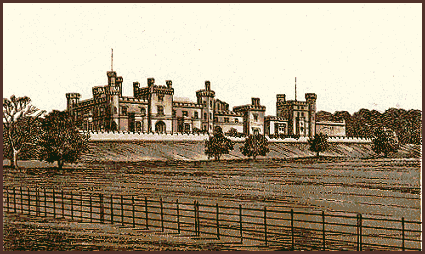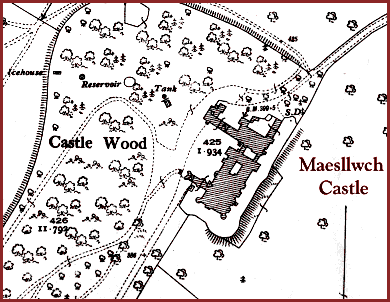 |
Maesllwch Castle 3
The family
|
|
|
Origins and early years
The family claimed descent from
a Norman lord, called de Wintona, whose lands were around
Cowbridge. The surname became corrupted, over time, to Wilkins. |
|
|
Walter Wilkins (1741 - 1828) was the second
son of John Wilkins, banker & solicitor of The Priory, Brecon.
He made his fortune in India and was first Governor of the province
of Chittagong. He was the first of a line of elder sons called
Walter who owned Maesllwch. He was MP for Radnor (1796 - 1828),
also a JP & High Sheriff. As a Whig, Walter Wilkins held
relatively liberal views, and did not take part in the Enclosure
movement. Indeed, he signed an appeal against the Nantmel enclosures
in 1814. |
|
|
De Winton
His son Walter (1777 - 1831),
born 6 years after the purchase of Maesllwch, commissioned the
architect Lugar, but died, relatively young, before the work
was completed. His son Walter Wilkins MP (1809 - 1840) was the
one who resumed, by Royal Licence, the ancient surname of de
Winton, on 6 July 1839. In the same month, he joined a deputation
to Lord Melbourne (the Prime Minister) against the eviction of
squatters from land sold by the Crown to local landowners, carrying
on his grandfather’s work of safeguarding the interests
of the poorest members of society. |
|
Maesllwch after the additions of
1879
Powys County Archives |

|
|
|
Walter de Winton, as he was now known,
died very young, as did his son Captain Walter de Winton (1832
- 1878), whose widow married the Deputy Lieutenant of Shropshire
- Geoffrey R Clegg-Hill. The next Walter de Winton (1868 - 1935),
had a son, also Walter, who died in 1914 - presumably in the
1st World War. The estate passed to the present Walter de Winton,
who was the son of a younger brother; Gerald Frederick de Winton. |
|
Maesllwch Castle around
1900 based on the O.S. 25" map
Powys County Archives |

|
|
|
Use the continue button to view
the pages in sequence or select from the menu page. |

|
|
 |

|


